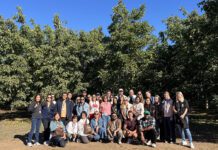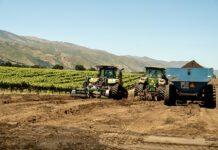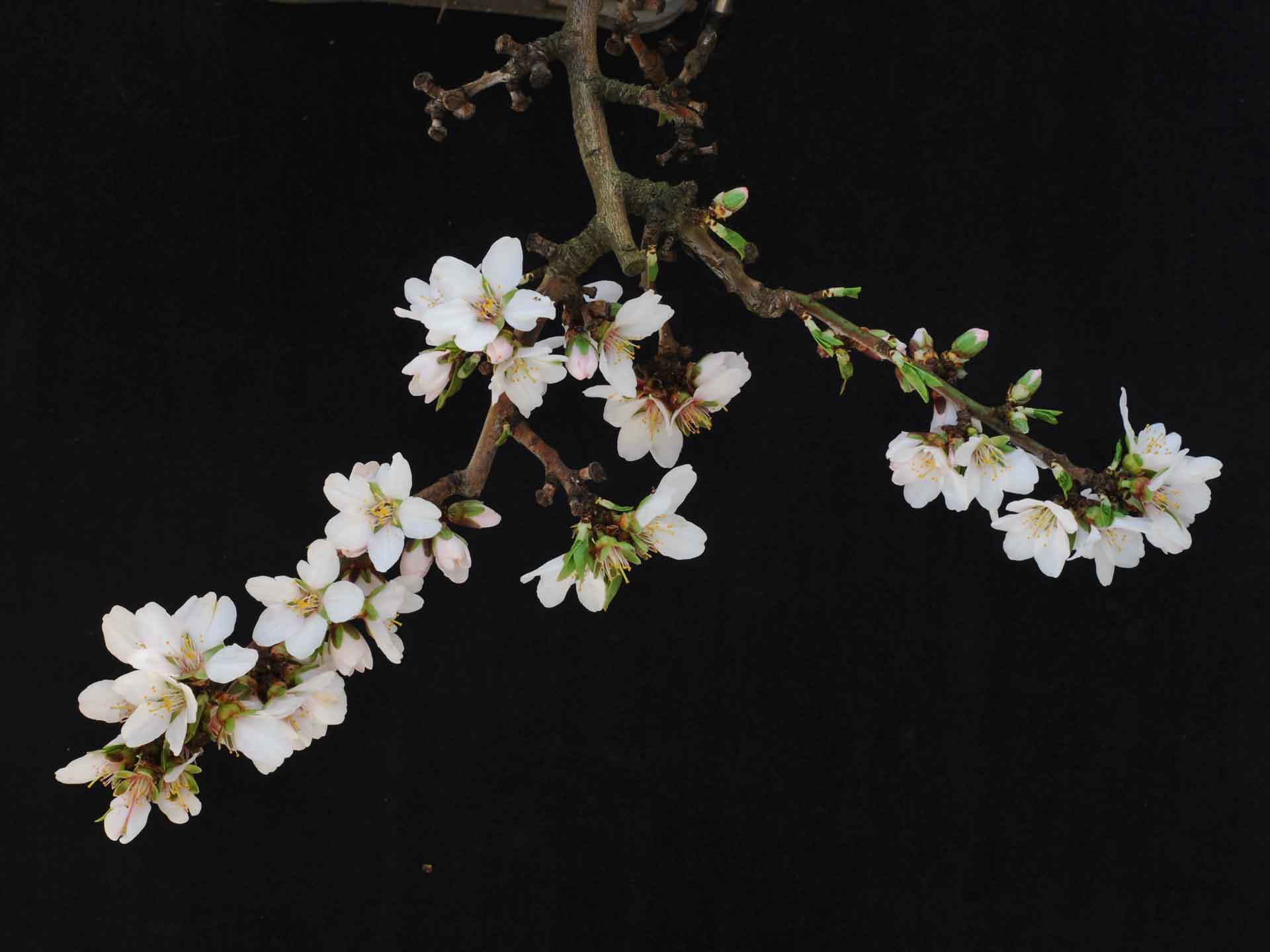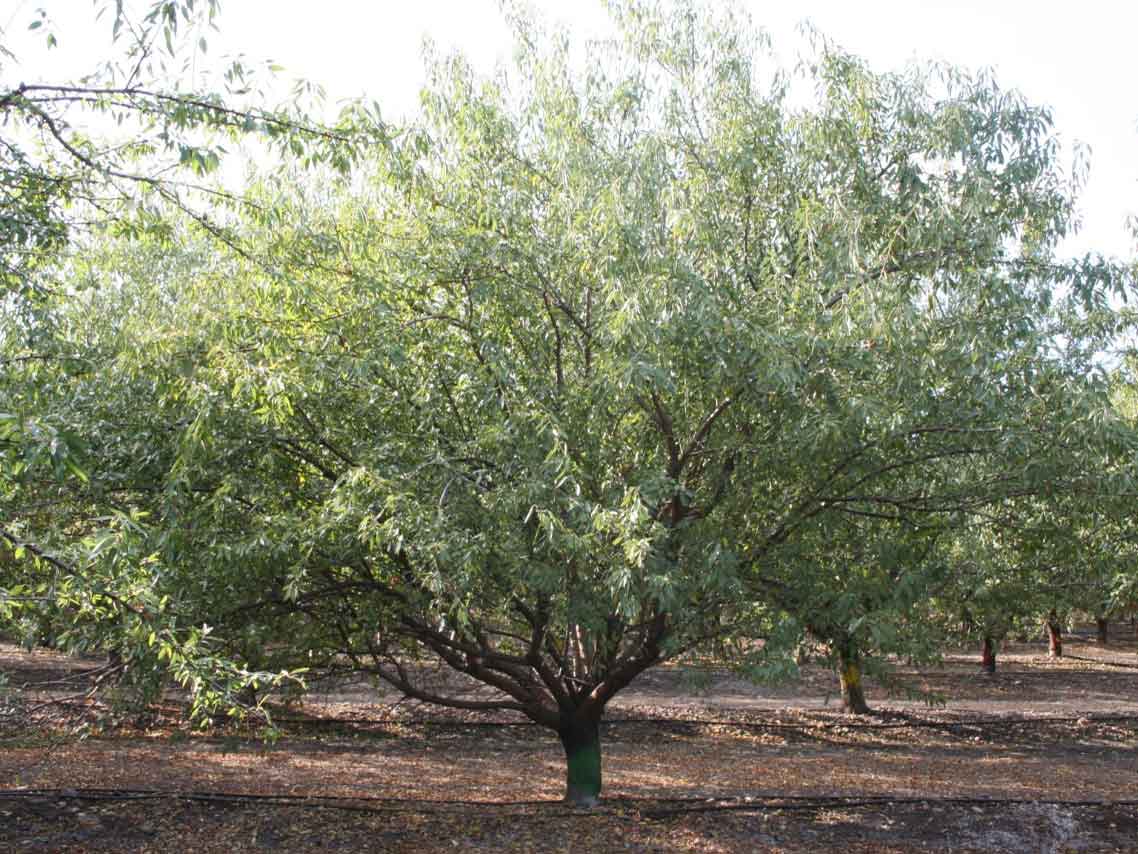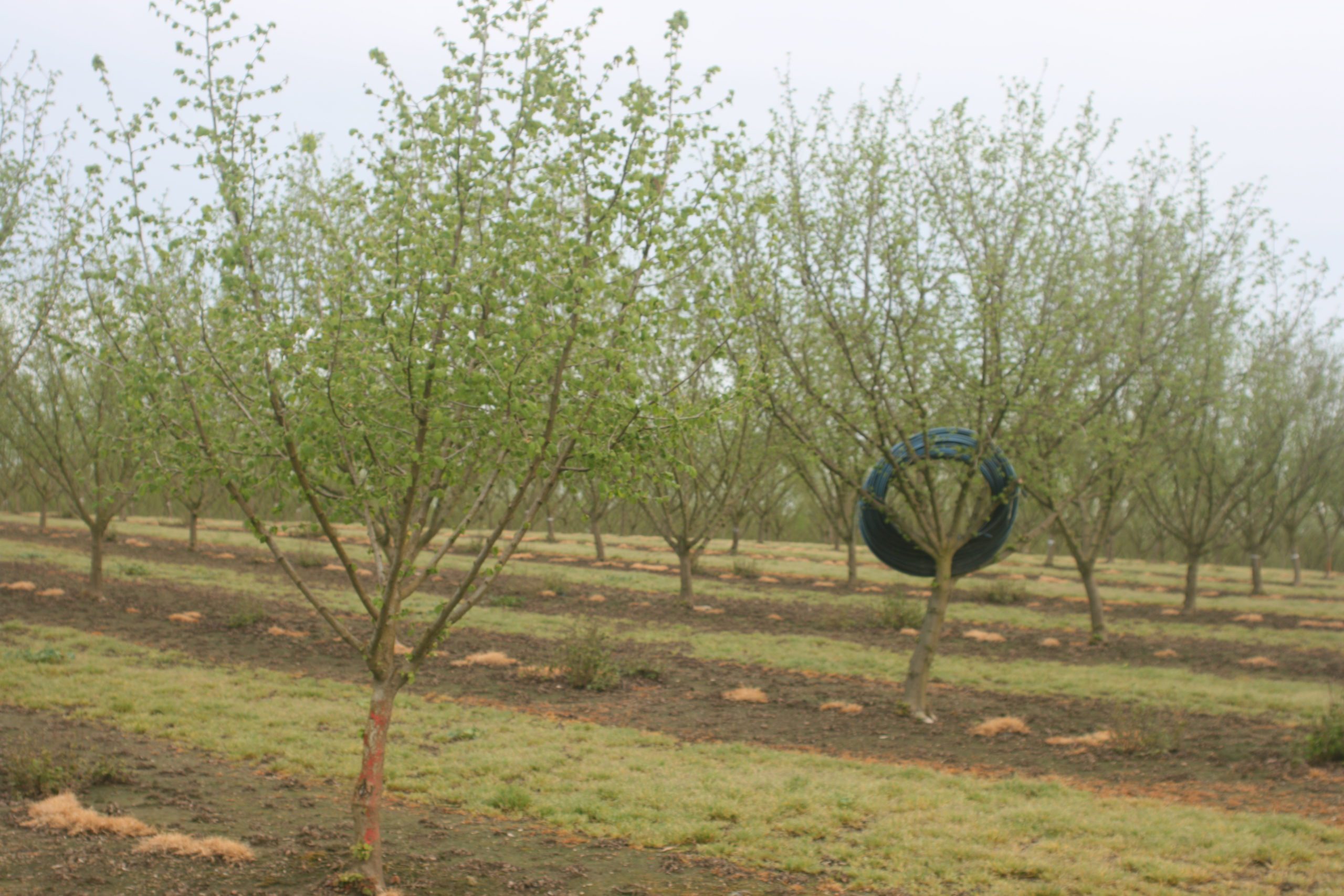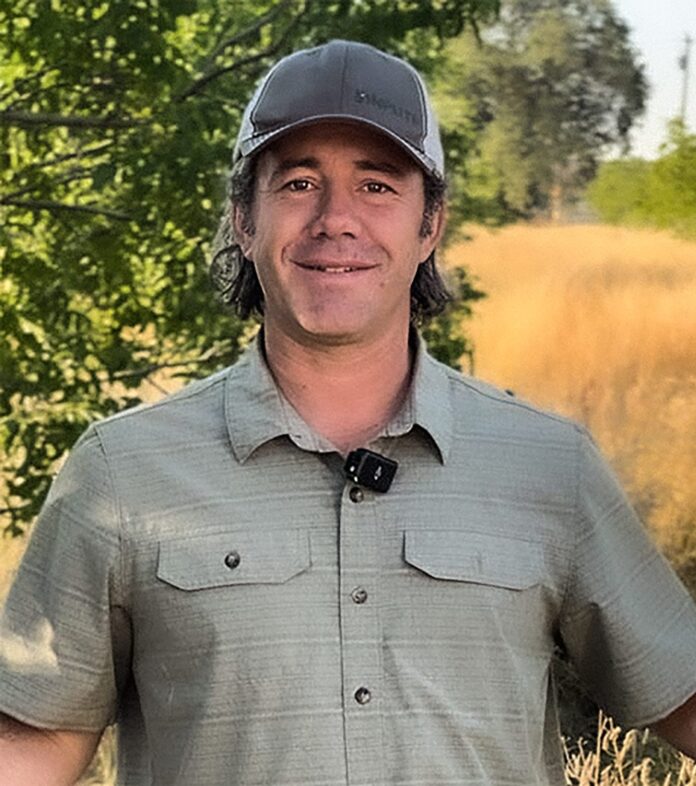
Listen to the audio version of this article. (Generated by A.I.)
“There were two things my dad complained about growing up, farmers and Californians,” Clayton said. “And I became both.”
Clayton Handy, a first-generation grower, worked his way up the corporate ladder of agriculture, managing about 2,000 acres. Now an independent consultant, he recently began working with Understanding Ag while additionally farming his own walnuts.
Finding Health Through Microbes
For much of his life, Clayton and his family have suffered from several autoimmune disorders.
Recounting the story, he said, “I had to be on steroid creams for rashes from eczema. I was on medications for my intestines. I was told there was nothing to be done and that these were chronic issues my family, and now my son, had to deal with.”
However, Clayton didn’t give up searching for a solution. It was then that he stumbled upon a litany of stories from other people suffering the same issues as himself but claimed to have cured themselves by building up their intestinal microbial population. For Clayton, it was worth a shot, be it changing his diet, taking pre- and probiotics, or eating fermented foods. Through much research and trial and error, he came upon a lifestyle that built up his intestinal population and, for years, has been symptom- and medication-free.
“I know a lot of this isn’t conventional,” he said, “but I’ve personally experienced how much of a difference microbes can have on my own body and family. It made me wonder what kind of effect they can have on agriculture.”
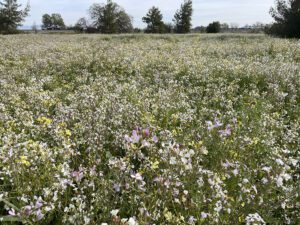
Soil Health Strategies and Innovations
Though Clayton had already been interested in sustainable farming, his family’s experience fully invested him in the cause. Today, he specializes in soil health practices and finding ways to reduce farm inputs.
“The first pillar of sustainability is profitability,” he said. “If these practices put farmers out of business, then they aren’t sustainable in the first place.
“Soil health is the foundation our farms are built on,” Clayton said. “You need to measure soil organic matter and soil respiration to see where you are and where you’re going.”
Initially, in 2017, Clayton’s organic matter was about 1.7%. He began planting cover crops even before the trees were in the ground. While the trees were young, he took advantage of his solid-set irrigation system, maintaining both winter and summer cover crops. Later, he introduced grazing, starting with sheep before switching to cows. Clayton follows the practice of rotational grazing and moves the cows daily through the orchard. In addition to cover crops, Clayton uses compost tea, a process of steeping compost in oxygenated water with a sugar source, and injects it through his irrigation system. This practice helps diversify the microbial population and accelerates its growth.
Over the years, plant succession occurred in his orchard. Clayton noted how his annual cover crop species began to struggle as perennial grasses and forbs, like bunchgrass, became established. This was largely due to his unique farming approach and has allowed Clayton to forgo the effort of purchasing and planting cover crops in these fields. Typically, perennials could pose an issue during harvest in most walnut orchards. However, Clayton’s orchard consists of Livermores, a short-statured tree that produces red-colored walnuts. Their size allows him to harvest using catchment frames, a method he says saves him $100 per acre compared to conventional harvest machinery.
By 2024, Clayton’s orchard soil had reached 5% organic matter, a remarkable feat in just seven years. He attributes this rapid increase to his multifaceted soil health strategies and his ability to maintain year-round ground cover. Many of his clients are limited to winter cover crops due to their larger trees, which require off-ground harvesting. In these cases, Clayton recommends planting winter cover crops with the goal of maximizing biomass. The living roots feed microbes in winter, while decomposing biomass sustains them in warmer months. Though progress is slower, his clients continue building organic matter on their farms.
Each year, Clayton saw his organic matter increase by at least half a percent. He pointed out that this growth boosted microbial populations and their available habitat.
“It’s a city full of microbes, and they work for me 24/7, 365 days a year.”
One of the biggest hurdles Clayton’s clients and other growers face is accessing or renting a seed drill. Though more are available in California now, finding drills, especially those suited for orchards, remains difficult. He hopes that as cover crops gain popularity, seed drills and custom planting operations will become more common. Given the diversity of California’s agriculture, finding a seed drill that fits different systems, such as high-density olive orchards, vineyards, almonds and walnuts, is challenging. Each has unique spacing and height requirements. A drill suitable for almonds may be too large for vineyards, while a small drill may require multiple passes in a walnut orchard.
Clayton recalls driving along Highway 99 in his early farming days, seeing thousands of acres of bare orchard floors. “Almost nobody was cover cropping back then,” he said.
Now, when he drives the same highway, he’s amazed by how many orchards have adopted cover cropping. “It was hard to find 10 years ago, but now, almost anywhere you go, you’ll see it.”
He recently visited a 900-acre orchard entirely planted in diverse cover crops. “It was amazing to behold,” he said.
At the time of his visit, they were grazing. “Walking through those orchards, there’s a completely different feeling.”
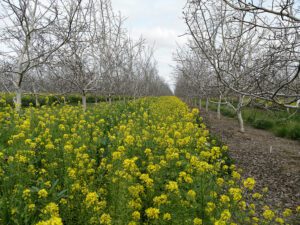
Reducing Inputs and Looking Ahead
Clayton worries that with rising input costs and declining produce prices, many growers will go bankrupt without these practices. “We need more ways to maintain yields with fewer inputs.”
Soil health practices like cover cropping can reduce long-term costs. Legumes fix nitrogen, but it’s the soil community that enables nutrient cycling. Certain microbes release phosphorus, while fungi help trees access more nutrients in the soil.
“If you can walk on it, it’s made of something, and that can be made available to your crop,” Clayton said. “Clay particles, even sand, can contain any number of elements, 16 of which are essential for plant growth. Something has to break that down for plants, and that ‘something’ is the microbial population.”
When asked about fertilizer use for his clients, Clayton said, “Typically, they apply a quarter to a third of what conventional farms use, while maintaining or even increasing yields.” He continued to note that these practices take time to produce results as growers are essentially trying to build microbial cities from sparse populations in many farm situations.
Clayton believes that by leveraging natural processes, growers can benefit immensely. Legumes fix N from the atmosphere, and since air is mostly N, the potential is vast. Similarly, much of plant biomass is carbon, also derived from the air.
A useful rule of thumb: Legumes terminated in early flowering contain about 4% N by dry weight. Non-legumes also contain N (roughly 3% by dry weight), but it comes from the soil rather than the air.
Organic matter also nourishes crops. Studies estimate that each percent of soil organic matter releases a significant amount of N annually, not to mention improving water retention.
The challenge for many growers is the time these systems take to develop. One year of cover cropping makes a difference, but multiple years yield far greater results. The initial stages can be discouraging, with small annual gains. Clayton’s farm, for example, reached 5% organic matter, a high level in modern farming, but it took seven years.
Several programs help growers start cover cropping at minimal cost. The Seeds for Bees program provides free or subsidized cover crop seed to California growers and beekeepers. Applications are accepted between April 1 and August 31 on Project Apis m.’s website.






